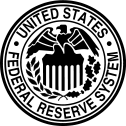|
|
|
||||
|
|
|||||
What is Federal Reserve System or What is FED
|
Ads by Google by
Now a days we come across daily lot of bank related news which are international in nature but directly or indirectly affect the Indian banking system and thus Indian bankers can not ignore such news. However, with little or no background on the systems prevalent in USA, UK and other European countries, Indian bankers struggle to understand the nitty-gritty's of such news. Thus, to make life easier for bankers who are interested to widen their horizon and for youngsters who are looking for opportunities in Financial sector, we are starting a series of articles which will keep on covering certain basic topics in easy to understand language.
What is Federal Reserve System or FED :
Federal Reserve System is world wide popularly is known as FED is the Central Banking System of the United States. It was established on 23rd December 1913, with the enactment of the Federal Reserve Act. Its Headquarters is at Washington DC. The following is the seal of FED :
What are Objectives or Roles Given to FED :
FED was originally established with three with three key objectives for monetary policy - (a) Maximum employment; (b) Stable Price; and (c) Moderate long term interest rates. The first two system are popularly known as the 'Federal Reserve's Dual Mandate. Over the years, the roles and duties of the FED have grown and now includes the responsibilities for monetary policy, supervising and regulating banking institutions, maintaining the stability of the financial system and providing financial services to depository institutions, the US government and foreign official institutions.
Ads by Google
Structure of Federal Reserve System or FED :
Federal Reserve System broadly consists of following :-
(A) Board of Governors appointed by President. It is called known as "Federal Reserve Board". (B) Federal Open Market Committee (Popularly known as FOMC). The details of this Committee are given below (C) Twelve regional Federal Reserve Banks. These are located in major citiies of USA
The above structure is unique in the world for a central bank as FED has both private and public components and was envisaged to serve the interests of both the general public and private bankers. Surprisingly, US currency is not created by FED, but by the U.S. Department of Treasury’s Bureau of Engraving and Printing prints paper money, while the Treasury’s U.S. Mint produces coins. FED is considered as an independent body but within government. The monetary policies decided by FED need to be approved by either President of USA or anyone else in the executive or legislative branches of government.
(A) Board of Governors :
It is a seven member body and member is chosen by Presidnet of USA for a term of 14 years and are confirmed by Senate. The term of one Governor begins every two years on 1st February of even numbered years. A member who serves a full term may not be reappointed. However, a member who completes an unexpired portion of a term may be reappointed. If a member leaves the Board before his or her term expires, the person appointed and confirmed to serve the remainder of the term may be later reappointed to a full term. All terms end on their statutory date regardless of the date on which the member is sworn into office. The Chairman and Vice Chairman of the Board of Governors are appointed by the President from among the sitting Governors. They have a term of four years but can be re-nominated as many times as the President wishes until their terms on the Board of Governors expire.
The present members of the Board are :-
The Federal Reserve’s responsibilities include:
The Federal Reserve System also conducts research on
the U.S. and regional economies. distributes information about the economy
through publications, speeches, educational seminars, and web sites.
(B) Federal Open Market Committee :
The Federal Open Market
Committee is popularly known as FOMC. This Committee consists of twelve
members--(a) the seven members of the Board of Governors, (b) the president of
the Federal Reserve Bank of New York, and (c) four of the other eleven Reserve
Bank presidents. The four Reserve Bank presidents serve one-year terms on a
rotating basis. Non-voting Reserve Bank presidents attend the meetings of
the Committee, participate in discussions, and contribute information about
economic conditions in their District. The FOMC schedules eight meetings per year, one about every six weeks or so. The Committee may also hold unscheduled meetings as necessary to review economic and financial developments. The FOMC issues a policy statement following each regular meeting that summarizes the Committee's economic outlook and the policy decision at that meeting. Four times per year the Chairman holds a press briefing after the FOMC meeting to present the FOMC's current economic projections and to provide additional context for the FOMC's policy decisions. A full set of minutes for each FOMC meeting is published three weeks after the conclusion of each regular meeting, and complete transcripts of FOMC meetings are published five years after the meeting.
(C) 12 Federal Reserve Banks?
ADVISORY
COMMITTEES : The above Federal Reserve System also uses Advisory Committees for
carrying out its varied responsibilities. There are three main Committees
which directly advise the Board of Governors, namely (a) Federal Advisory
Council - composed of 12 representatives of the banking industry.; (b) Consumer
Advisory Council : It advises the Board on the exercise of its responsbilities
under the Consumer Credit Protection Act on other matters in the area of
consumer financial services; (c) Thrift Institutions Advisory Council.
Source : Wikipedia and Federal Reserve Bank websites etc.
|
